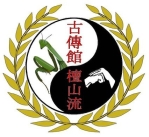The Boards
Yawara
The first board is the Yawara board. It consists of releases, counters, joint locks, and throws. The element of surprise is of prime importance. From the time you are attacked you are limited to a few seconds to escape and/or retaliate. The techniques must be practiced until they become automatic reaction. Often during practice frustrations arise when a technique fails to yield the sought after results. Don't forget: in class you give up the element of surprise and rely instead on mutual cooperation to promote learning. When effecting a release from a wrist grab it is important to keep your hand or hands open and relaxed. This allows your Ki to flow as well as weakening your attackers hold. Also important is complementing your hand and body movements to obtain the maximum effectiveness of the technique. Yawara techniques will be incorporated in some of the succeeding boards.
Nage No Kata
Each throw is dependent upon the proper correlation of three aspects. First is kuzushi, or off-balancing your opponent. Second is tsukuri, or fitting, the relative position of tori to uke. Third is kake. This is the actual execution of the throw. If any of these aspects are ignored, you will have limited success. You also should take into account that your technique must complement your situation. If your attacker is pulling away from you, his energy can be used for a rear projection. Likewise, if your opponent is pushing, you can blend with him for a forward projection.
Shime No Kata
The Shime board incorporates several throws learned in Nage with locks learned in Yawara. Several new constrictions and immobilizations are also introduced. Chokes result when the air supply is cut off by using pressure on the front of the throat. Strangles are inflicted by exerting pressure on the side of the neck, (Carotid arteries & Jugular veins) diminishing the brain's blood supply. Both techniques can be performed simultaneously. During the several minutes it takes to render someone unconscious by choking, you will be faced with violent resistance. The strangle, however, can be completed in a few seconds with much less pain noticed by your uke. Therefore, less struggling will be encountered. More caution must be exhibited when practicing joint locks, as serious injury can result. Gradually increase the pressure on the joint, giving your uke ample time to tap out.
Oku No Kata
The last of the basic boards combines previous boards with additional throws, locks and percussion. Performing several techniques in succession will prepare both tori and uke for actual street situations. Additionally, you will become more relaxed in stress situations of all kinds. This can allow better performance inside as well as outside the dojo. Most techniques are described for right-handed execution. They can, and should, be practiced left-handed as well. In many cases different throws than those recommended can be used to the same end.
Shinen No Maki
The Scroll of Profound Arts. The Shinen board carries on with combination techniques, generally a defense from a blow or other attack, followed by a throw and a retaliatory technique. Also referred to as the Deadly Arts, Shinen practice should always be preceded by the Shinen Bow. This bow signifies the deadly intent when executing these techniques. To perform the Shinen Bow, tori and uke face each other as usual. Both persons turn to their left, dropping to their left knee, while slapping the mat with both hands, palm down. They then rise and face each other to begin the first technique. It is only necessary to perform this bow at the beginning and end of practice.
